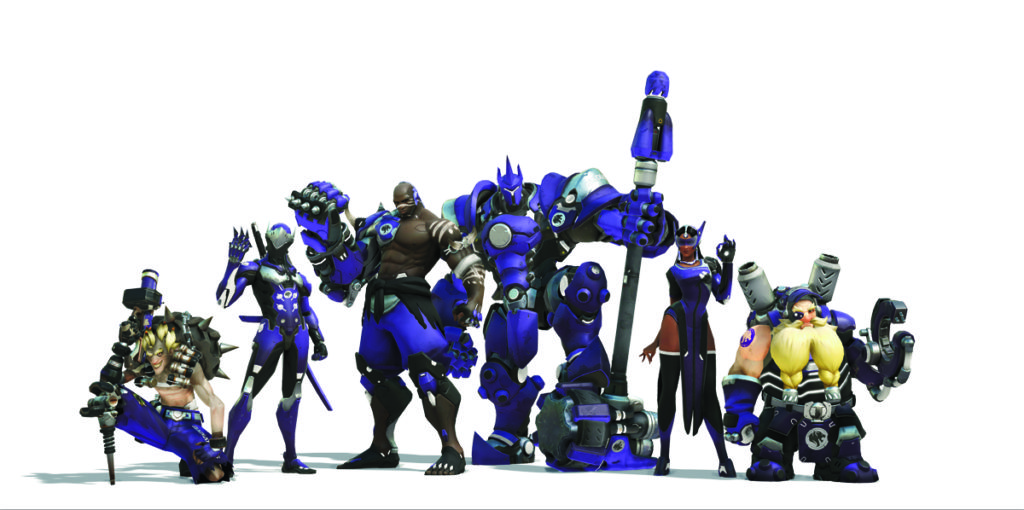
The 15-foot-tall statue of Tracer—a slender young woman with a brown pixie cut and futuristic flight suit—seems misplaced at the Blizzard Entertainment campus in Irvine. Surrounded by equally massive statues of orcs, demons and other fierce warriors of Blizzard’s iconic video games, including World of Warcraft and Diablo, the face of Overwatch isn’t as intimidating as her neighbors.
But while the Pixar-like gunslinger isn’t the scariest beast the company has created, the amount of fanfare she and her fellow Overwatch heroes have earned since appearing on gaming consoles and computers in May 2016 is unlike anything ever seen. In many ways, Overwatch has taken competitive gaming out of its niche circles and into the mainstream more than ever before.
Overwatch is an online first-person shooter in which two teams of six battle for control of stationary target points and/or a moving vehicle. Genre-wise, it’s nothing that hasn’t been done before (see classics such as the Call of Duty games and the competitive-shooter standard of Counter-Strike: Global Offensive). But rather than sticking with the grim visuals of war—in the present or future, such as in Halo—the maps, characters and weapons in Overwatch are bright and colorful enough to provide a more positive feeling as the 12 competitors work to destroy one another.
“I know it sounds bizarre, but one of our goals was making the world bright and inviting instead of postapocalyptic and oppressive,” says Jeff Kaplan, Overwatch’s lead designer. “If you’re going to spend hundreds of hours in an experience, having it be an oppressive experience is not what you want. If you look at our maps, we wanted to create these places that people always wanted to go to in the world—including places that don’t exist but we wish to see someday, like ‘Oasis’ in Iraq rather than the clich version of Iraq that you’re used to seeing in video games.

“The other thing we wanted to focus on was variety,” Kaplan continues. “When you play a video game, you identify with whatever character you’re playing. In a single-player game, you’re forced into it, where you either feel like you are the protagonist or you’re not. Even in games with very limited selection, we tend to gravitate toward one character more than the others. By introducing such a wide variety—we’re at 26 heroes now—it’s almost hard to find somebody you don’t identify with.”
So far, Kaplan’s vision is working. As seen in fan art and merchandise, both casual and competitive Overwatch aficionados have found characters worth loving. From the intimidating dual-wielding Reaper to the angelic healer Mercy, the differences in heroes’ looks, play styles and origins have drawn plenty of fans to Overwatch, even if they’re not otherwise interested in video games.
But the best characters and level design wouldn’t save a crappy game. Thankfully, the Overwatch crew used their “easy to learn, impossible to master” motif to create one of the most entertaining gameplay experiences in recent history, according to critics and fans alike. After dominating the 2016 video-game awards shows—including more than 100 Game of the Year awards at events such as the Game Awards and Game Developers Choice Awards—Overwatch’s popularity continued through 2017, picking up some extra trophies in categories such as Best Ongoing Game and Best ESport.
For the uninitiated, “esport” is the term used for competitive gaming—and it’s among the fastest-growing industries in the world, the perfect cross-section of sports, entertainment and technology. Although watching people play video games may seem foreign to those across a generation gap, game-centric streaming services such as Twitch, as well as mainstream platforms such as YouTube and even ESPN, have proven that a huge audience around the world is eagerly watching high-level esports.
In January, esports reached another milestone with the birth of the most prolific professional gaming promotion to date, the Overwatch League. After 18 months of international competitions such as APEX and the Overwatch World Cup, Blizzard separated this megahit from the bunch. Rather than condensing the tournaments into a few days or weeks, the Overwatch League offers an ambitious schedule, running every Wednesday through Sunday for the first half of the year.
“The Overwatch League is about taking an incredibly successful game that has more than 35 million players around the world and building a league around it that’s modeled after traditional sports leagues in many ways,” says Nate Nanzer, Overwatch League’s commissioner. “It started as an idea of taking what we could from traditional sports and applying it to what we were doing with competitive gaming. We looked at the structures of all the American sports leagues as well as some leagues across Europe and Asia, and we were able to pick and choose the things that we thought fit best for what we wanted to achieve.”
When development began on Overwatch in 2013, it wasn’t meant to become a massive esport. Launching a brand-new game into a market saturated with popular series is a risky enough venture (just look at Battleborn, an ill-fated game similar to Overwatch that released the same month), and most franchises are around for several years before succeeding in the competitive world. But even while emphasizing the creation of a game appealing to the widest range of players, the competitive nature of the shooter quickly became apparent within Blizzard’s offices.
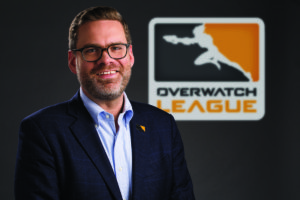
“Early on, we were just focused on making a world-class team shooter—we weren’t putting a lot of focus on making it the world’s biggest esport,” Kaplan says. “But as we started getting heroes into the game and playing, just watching the team naturally get super-competitive was kind of hilarious. It was to the point at which we hadn’t even announced the game yet and the team was getting so competitive with the game that we started running tournaments.”
The competitions among the 60 people working on Overwatch soon evolved to include a couple of voluntary commentators—or “shoutcasters” in esports vernacular—analyzing and cracking jokes during every match. Even on the smallest of scales, it was evident that what the team had created was bound to become an incredible esport. By the time the public learned about it at BlizzCon in November 2014, the Overwatch crew already believed they had a winner on their hands—even if they were still secretly hoping that people wouldn’t hate it.
“It’s been extremely humbling for us to see how people have adopted Overwatch because when you’re making something, you obviously love it,” Kaplan says. “You wouldn’t make it if you didn’t believe in it, but I think all creative people have that doubt in them, and our team is no different. We all loved it, but we weren’t sure if anyone else would.”
* * * * *
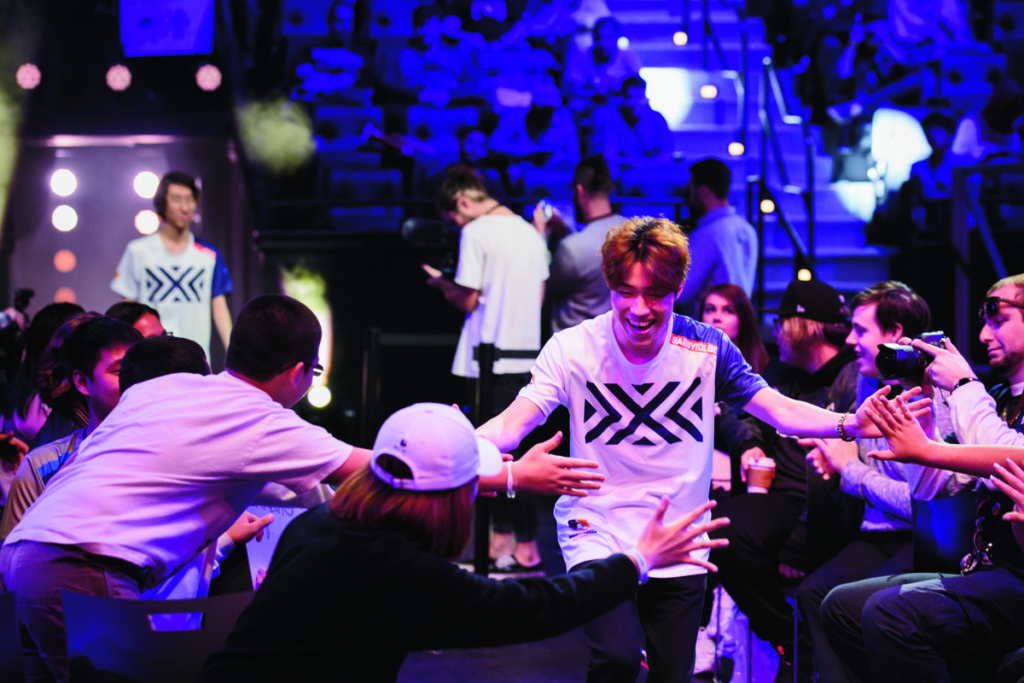
Nestled in the Hollywood hills along the route of too many celebrity-sightseeing tours, the New York Excelsior (NYXL) house is a clear reminder that the vast majority of Overwatch League players are still the right age to attend college if their gaming careers don’t work out. With eight players on the active roster, as well as a small coaching staff, approximately a dozen loose pairs of sneakers line the foyer while a sink full of dishes waits in the kitchen.
By no means is the NYXL house a pigsty, but having a housekeeper come every few days is a necessity when most inhabitants have only ever lived with their parents or teammates. It’s not the only one either, as all 12 Overwatch League teams found homes for the players and coaches spending the season in Southern California. Whether it’s one large house, some apartments or a high-end compound akin to one the Los Angeles Valiant are working on, pockets of the esports industry have popped up in several neighborhoods within Uber-ing distance of the league’s Burbank headquarters.
One of the biggest differences between NYXL and other houses full of young men is that America’s top-ranked Overwatch team—among the best behind the dominant Seoul Dynasty—is composed of former teammates from South Korea’s massive esports scene. Whether they competed together as part of the respected LuxuryWatch teams or shared a World Cup experience representing their country, this isn’t NYXL’s first rodeo as teammates. But while they’re used to sharing an Overwatch map, the team’s adjustment to American culture—including their daily English lessons—is still a work in progress.
“I’m enjoying everything in American culture so far,” says 22-year-old Park Jong-yeol, a.k.a. Saebyeolbe, one of NYXL’s primary damage-dealers. “You’ll talk to a stranger, and they’ll ask you, ‘How are you doing?’ With small things like that, I feel like people are more courteous here than in Korea.”
“I like everything except for the food, which is very salty,” adds 20-year-old Hong Yeon-joon, a.k.a. ArK, the team’s star support player.
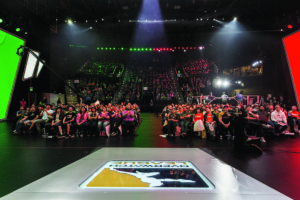
With the same speed as ArK and Saebyeolbe are adjusting to American culture, the western world is learning about esports. After spending many years underground, its rise into the American mainstream has received coverage across major sports, entertainment and technology outlets. And while Overwatch and Dota 2 (the popular sequel to Defense of the Ancients, which spawned from Blizzard’s Warcraft III) aren’t exactly making it to ABC or NBC just yet, they’re considered every bit as legitimate as any sport in Korea.
“When you have something that is so ingrained into the culture the way video games have been in our culture for the past 15 or 20 years, it produces an age gap to where people who have grown up with it their entire lives have an intrinsic understanding of it,“ says Scott Tester, NYXL’s director of player personnel. “Video games and esports have been a major part of the culture for decades now in Korea, and you’re starting to see that grow more and more here. Fifty years ago, people had baseball and basketball and football as their leisure activities, but now you have an entire generation of people who have grown up with video games.”
As Tester—who worked on Overwatch for Blizzard before getting the offer to build NYXL’s roster—points out, Seoul lent itself to esports early on because of its infrastructure. The city’s tightly packed geography made it easy to get high-speed internet to the majority of gamers (an issue that plagues some current Overwatch League houses), and indoor esports venues such as Nexon Arena offered a massive stage for the nation’s pastime. Coupled with lackluster interest in traditional sports, it’s obvious why the Overwatch League is packed with players from Korea.
But for the new California-based venture, many of the details will look more familiar to Americans than they would to Asians. The owners of NFL organizations such as the Patriots and Rams own teams in their home cities, and NYXL’s backers also own the New York Mets. Although the Overwatch League might’ve survived without the support from traditional sports franchises, the ability to reach fans outside of tech and video-game circles has been paramount for the global spread of esports.
Aside from gaining well-known owners, the Overwatch League also took massive steps to improve the professionalism of esports. From guaranteed health care and salaries to penalizing players for inappropriate actions during competitions or on streaming and social media channels—which is already a topic of discussion this season—the league’s implementation of rules mimicking those of mainstream sports helped everything launch smoothly. And in their capturing of regulations of successful sports promotions, the Overwatch League also took a geographical trick to help draw in some extra fans.
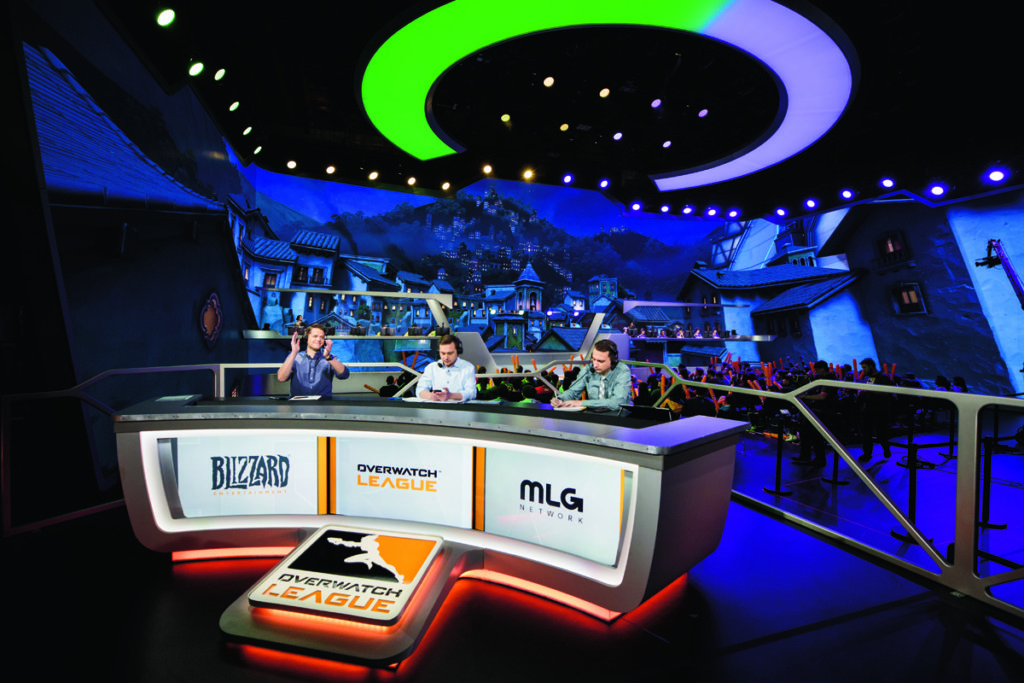
“I think the biggest thing that’s different about Overwatch League that attracts a lot of people is that it has city-based teams,” says Kim Phan, Blizzard’s director of esports operations. “That’s something that a lot of people can relate to, and no other esports have done that. Usually, there are just teams with team names, but Overwatch League having teams backed by well-known faces in each city has brought a really interesting appeal. For me, personally, having a team from my own hometown makes me just want to cheer for that team regardless if they’re good or bad.”
Beyond city-based allegiances such as Phan’s to the Dallas Fuel, the Overwatch League is using the Olympics’ playbook and promoting the backstories of interesting players as well. Although it may not have found a Pita Taufatofua just yet, Blizzard gives each competitor a fair chance to become the Tongan flag-bearer of the sport. “Even when you’re talking about regular sports, there are stories that people love to follow about the competitors that allow them to relate to that individual,” Phan says. “I think because so many of the viewers are also players, being able to relate to the professional players because of where they’re from or their play style or the type of heroes they like to play makes it more interesting. Just to hear the journey of each individual player draws people in and gives people specific players to cheer for.”
* * * * *
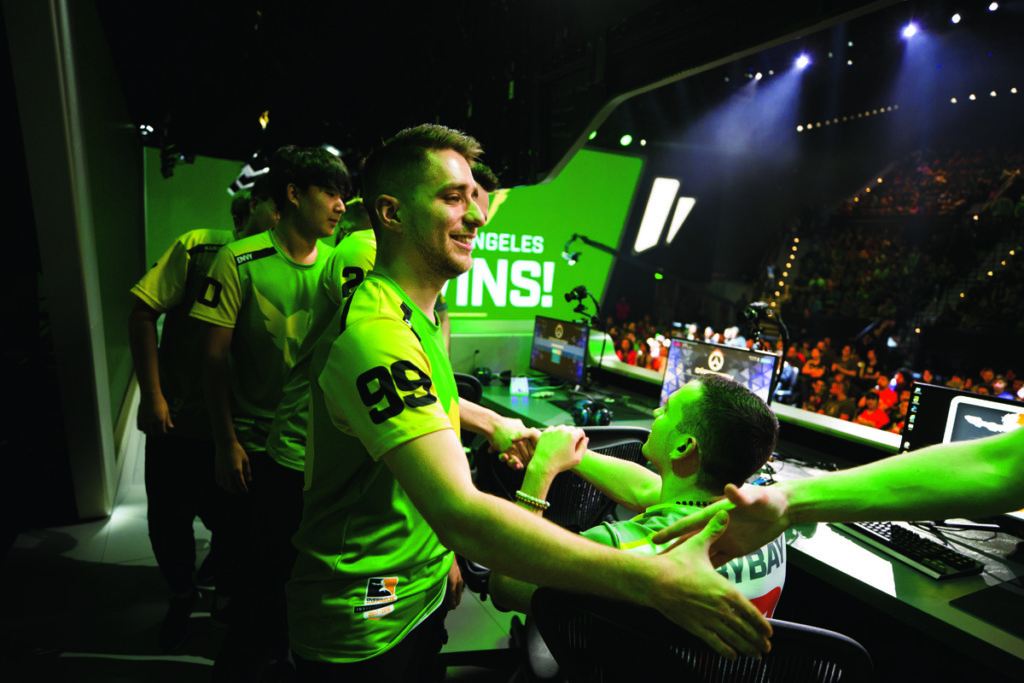
From a commuter’s point of view, there’s no reason why a few hundred loud millennials—some carrying signs and other props—are pouring into the Burbank studio that once hosted Johnny Carson and Jay Leno. But while the opening night of the Overwatch League at Blizzard Arena may be a strange sight for those heading home, the energy inside this Wednesday is unlike anything the passersby have likely experienced.
Falling between a college sporting event and a 500-person Bernie Sanders rally, the electricity in the air is more palpable than the insane voltage flowing into the dozen computers onstage or the massive monitors hanging around them. The colors and logos of each team can be spotted throughout the tense crowd, and a little polite trash talk is already forming between the gold-clad Valiant fans and the purple Los Angeles Gladiators section. “I think both [LA] teams are excited and worried about the rivalry because season one is really going to set the pace, and both teams are working hard to get that position as the LA team,” says the Gladiators’ Aaron “Bischu” Kim. “I’m not going to lie: I’m very happy about our team colors. The purple is looking great, and it’s easy to tell when our fans are there because people aren’t usually just wearing purple.”
The importance of winning over a home market isn’t lost on the Gladiators or the Valiant. The international London Spitfire, Shanghai Dragons and Seoul Dynasty all have entire countries to themselves, but Los Angeles has multiple teams competing for local hearts right from the start.

For Bischu, capturing fans would be great for the first Overwatch League season, but it’s also far from his top priority. The former professional League of Legends player knows how far the industry has come in recent years, and he’s excited to prove he can hang with the best on the biggest stage yet. “I just want to make the fans and my family proud for supporting me through this video-gaming adventure,” he says. “My parents really wanted me to go back and work in the family business after college, but I begged them to give me one more year. When I got this chance, they were really happy for me, and I was really happy for myself because video gaming is a lot more fun than making ingredients for cement back in Korea.”
But players such as Bischu aren’t the only ones banking on the Overwatch League catching on. Although neither LA team wants to be relegated to the role of the Clippers, those coming from the world of traditional sports know how much a crosstown rivalry could help both teams.
“I’m a big believer that a rising tide lifts all boats,” says Ari Segal, the president and COO of the Valiant who came over from the Anaheim Ducks. “Growing up, it was fun to be a Yankees fan and have friends who were Mets fans—or the Giants and Jets—and that’s something that goes back for generations in New York. From a storytelling perspective, we can really benefit from having a local rival.”
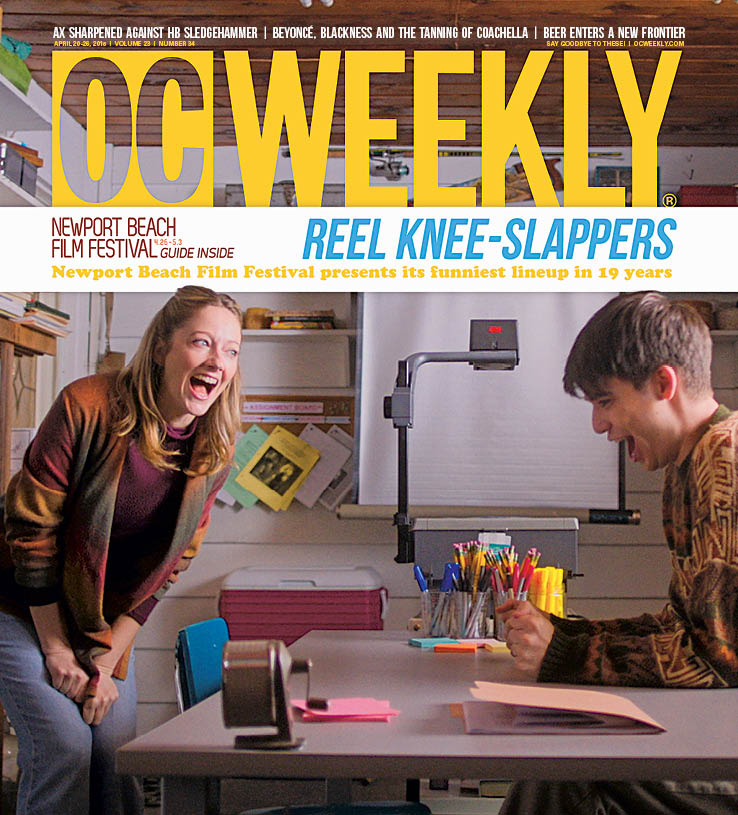
Perhaps even more than the Gladiators and Valiant, the player most concerned with the local turnout of the Overwatch League is on the Boston Uprising. Jonathan “DreamKazper” Sanchez is Southern California’s lone representative in the league, and the Hemet native has become a hometown hero among his family and friends. “It’s pretty nice that my family is close enough that they can come watch me,” Sanchez says. “Before, no one thought that this could really be a career or even seen as a sport, but now that it’s starting to grow pretty big, everyone sees that it’s cool. All of my friends who used to know me think it’s cool that this is so much fun to watch.”
Even with DreamKazper as the only local Overwatch League participant this season, the amateur competitive scene is plenty strong across SoCal. Local tournaments, with battles as fierce as you’d see on Twitch, regularly take place in many cities. And the local circuit has a more diverse playing field, with women such as Kelsey “ricemilk” Ziff ranking high on scoreboards, as opposed to the all-boys club of the Overwatch League.
“I think there’s kind of an assumption that girls aren’t as good or only play support characters, so you have something to prove going into it,” Ziff says. “It’s where I get to live out my fantasies of destroying all the boys.”
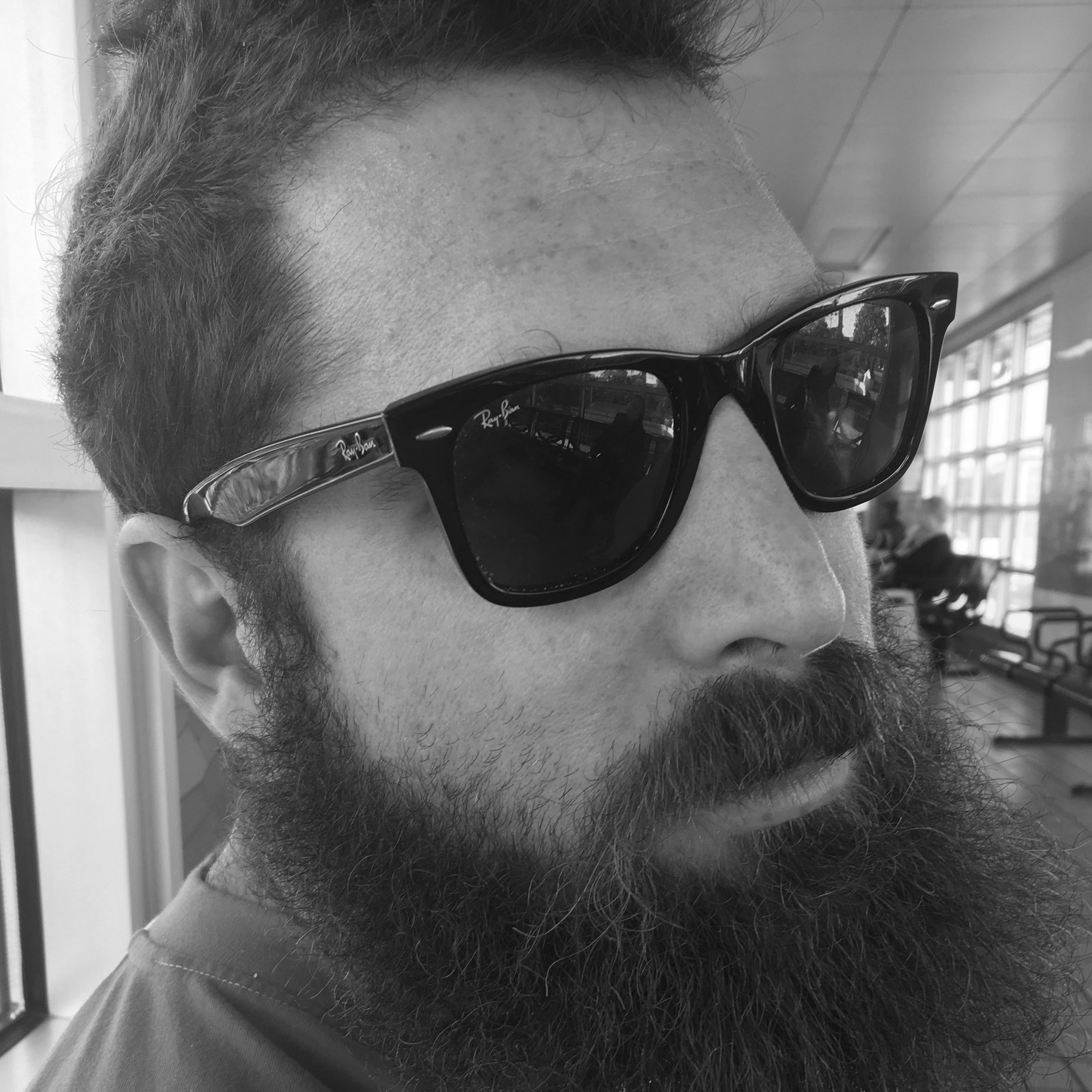
Josh Chesler used to play baseball for some pretty cool teams, but now he just writes about awesome stuff like tattoos, music, MMA and sneakers. He enjoys injuring himself by skateboarding, training for fights, and playing musical instruments in his off time.

